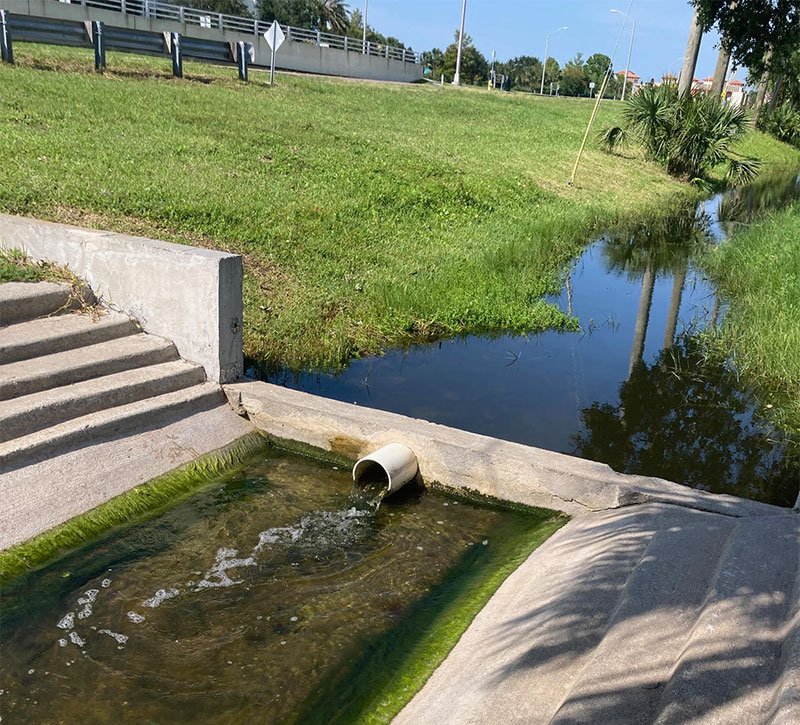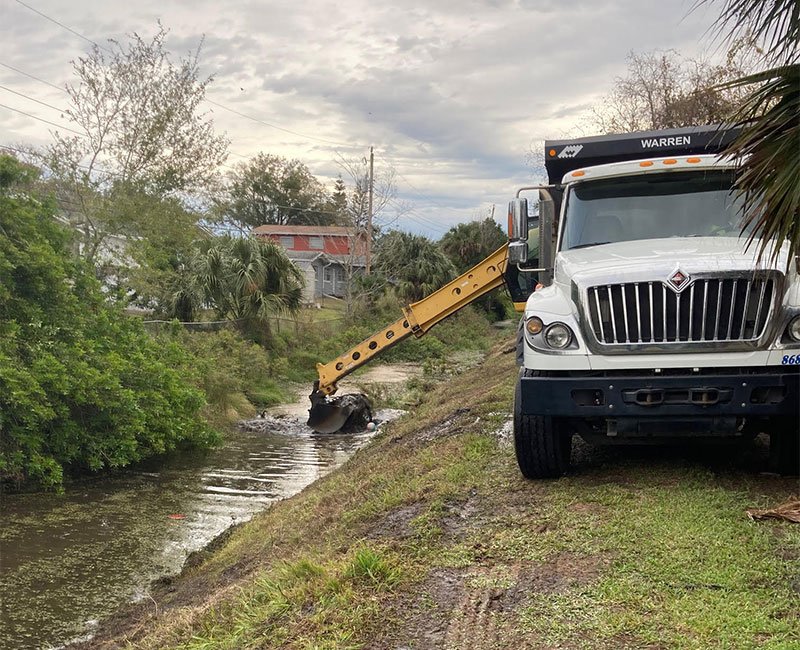SWIRL (Stormwater at the Indian River Lagoon)
Background
SWIRL is a proposed program of testing stormwater entering Florida’s Indian River Lagoon to identify sources, volumes, and types of pollution, in order to help clean up this unique aquatic feature and protect its natural inhabitants, including endangered manatees.
In 2022, Jeffrey Greenberg (Professor Emeritus of Earth and Environmental Science, Wheaton College; Vice President of Geology in the Public Interest; and Senior Consulting Scientist, a Rocha-USA/Florida) and his associates teamed up with other organizations including local environmental groups and the University of Florida to apply for an NSF grant to fund project planning. They did not receive a grant, but these partnering organizations are still working together on funding options, and they are confident that ultimately the program will be successful.
A Call to Arms to Help Manatees and Other Endangered Species
The project consortium, including Geology in the Public Interest, a Rocha, and other local organizations, continues to search for funding to make Jeff’s vision a reality. Preliminary water sampling, with initial results, may occur in the fall of 2023, which should provide compelling evidence as to why this work needs to be expanded. In any case, we welcome all offers of advice, assistance, partnership, or funding.
Contact Jeff Greenberg directly for further information and a project update at: Jeffrey.greenberg@wheaton.edu
GPI VP Jeff Greenberg on SWIRL:
“The grand vision for a study designed for understanding the various inputs from land into the Indian River Lagoon (IRL), began in my backyard.”
When I was looking for a new house in Titusville, Florida, the realtor showed us a place with a “ditch” for stormwater control, right along the back boundary. This feature is only 35 feet from our back door. My first thought was of the multitudes of mosquitoes that must be nurtured by that stagnant water. I bought the house, but then noticed hardly any smell and fewer mosquitos than while living in Illinois. Surprise! The creek is loaded with small, mosquito-eating fish. I discovered that the ditch is actually now a natural creek, converted by the organisms that comprise its ecology. This is valuable habitat.
I also observed the diversity of critters that make the creek their neighborhood: six species of turtles, two kinds of water snakes, at least eight fish species, gators, otters, dragonflies, butterflies, and those animals that live along the creek (raccoons, opossums, armadillos, rabbits, etc.). Frequent visiting species include nearly every type of wading and freshwater-oriented birds. I was amazed at its richness.
Beyond wanting to protect and maintain the wildlife, I also knew about the plight of manatees in the IRL.
It was generally accepted that the degradation of the IRL was directly a result of human abuse in poor sanitation practices. Sewage was known to be a source of nutrient loads and “suspended solids” in the lagoon, causing algal growth and blocking sunlight, thus contributing to the loss of vital seagrass on which the manatees survive. Starving manatees became a shameful reflection on Florida lifestyles along the IRL. A lot of effort and expense is now being invested in changing from septic sanitation to public sewer systems. The high-percolation, sand-dominated soils here are poor hosts for simple septic system effectiveness, leading to excessive discharges of raw sewage into the lagoon.
However, there is more to the degradation story than just bad household sanitation. Some indications are that the seagrass and all lagoon organisms are stressed or killed by other factors. In 2022, the Head of the Marine Resources Council (MRC) called for “others” to provide chemical analyses of organic compounds used on land that are being sent via stormwater into the IRL. Authorities have allowed, even fostered, use of herbicides to clear surface vegetation from freshwater lakes, ponds, and creeks near the IRL. The residents also apply a substantial amount of lawn chemicals. Unfortunately, nobody, academic, government, commercial, or private, has a real handle on what is actually draining into the lagoon.
And so, last year (2022), I gathered a great team of professional practitioners to apply for a National Science Foundation grant that involves cooperation between experts, local community citizens, and students. Our team, led by some University of Florida scientists, was not successfully funded. However, we kept the team together and remain confident that we are on the right track.
At this time, mid-2023, a revised grant proposal is being put together. Our challenge is to gain formal access to outflow locations for stormwater into the IRL. We have made a formal request to the city council here to allow us that access. A less-than ideal alternative is to bypass the city and develop a plan around discharge sites that are open to public access.
— Jeff Greenberg


